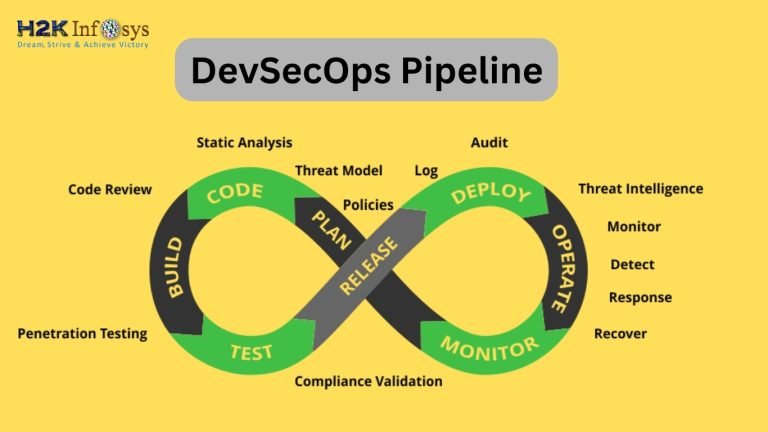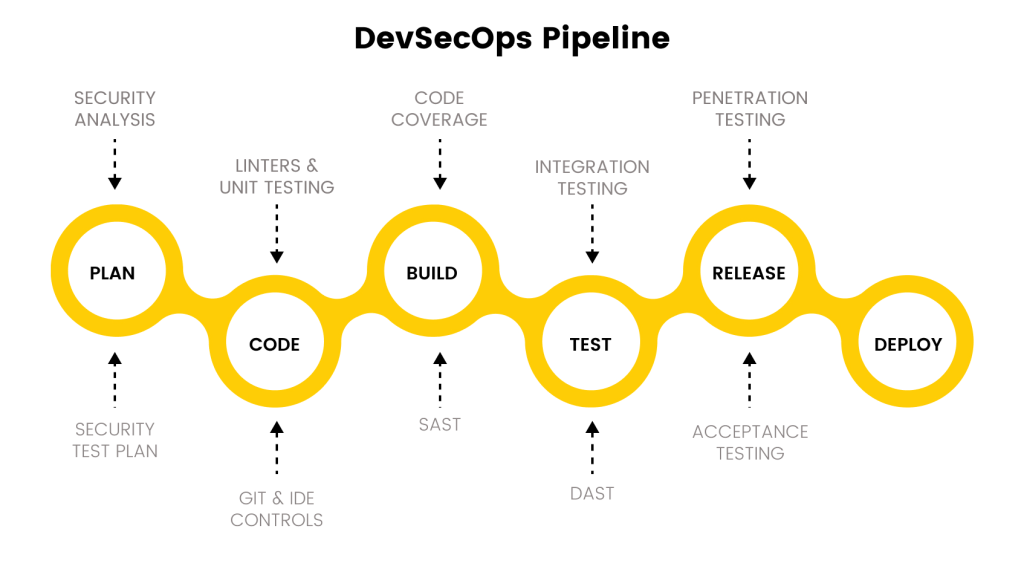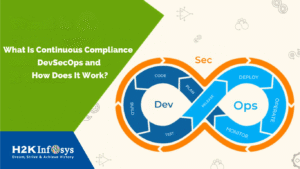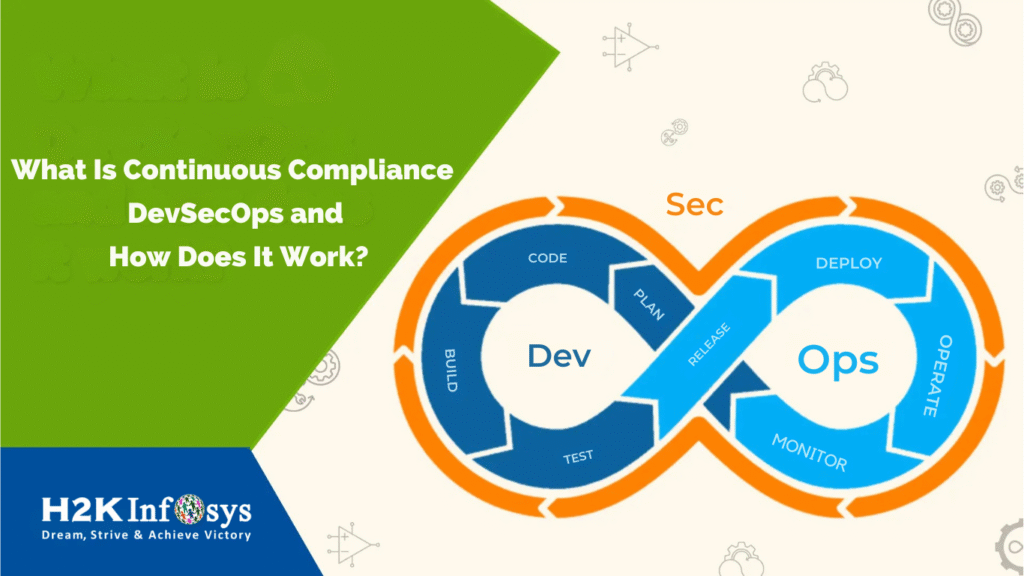Introduction: Why DevSecOps Matters in 2025
In today’s digital-first world, cybersecurity threats are growing as fast as application deployments. Traditional software delivery models where security was treated as a final phase are no longer enough. Enter DevSecOps, a development culture that integrates security directly into DevOps processes.
Whether you’re a developer, security analyst, or aspiring engineer, learning how to build a DevSecOps pipeline from scratch can set the foundation for secure, scalable software delivery. For those exploring DevSecOps Training for Beginners or considering a DevSecOps Certification Course, this guide offers everything you need to get started.
In this blog, we’ll break down the components, steps, and tools involved in constructing a DevSecOps pipeline that’s not only secure but also efficient and scalable.
What is a DevSecOps Pipeline?
A DevSecOps pipeline is an automated set of processes that integrates development (Dev), security (Sec), and operations (Ops) from the very beginning of the software development lifecycle. Unlike traditional methods where security comes last, DevSecOps ensures vulnerabilities are identified and fixed early saving time, money, and reputation.
Key Benefits:
- Early detection of security flaws
- Automation of security testing
- Faster deployment with reduced risk
- Alignment between dev, security, and operations teams
Understanding DevSecOps: Not Just Another Buzzword
DevSecOps is the natural evolution of DevOps, emphasizing security as a shared responsibility. It shifts security to the left into the early stages of the Software Development Life Cycle (SDLC) ensuring issues are identified and fixed before they hit production.
How DevSecOps Differs from DevOps
| Feature | DevOps | DevSecOps |
|---|---|---|
| Focus | Speed & collaboration | Security & risk reduction |
| Security integration | End of pipeline | Throughout pipeline |
| Tools | CI/CD, container orchestration | Adds SAST, DAST, IaC scanning |
| Responsibility | Mostly developers & ops | Shared across all stakeholders |
Implementing a DevSecOps pipeline requires more than technical tools; it demands a shift in culture and mindset something heavily emphasized in DevSecOps Training for Beginners.
Prerequisites Before Building a DevSecOps Pipeline
Before you dive in, ensure you have the following:
- Basic understanding of DevOps practices
- Familiarity with CI/CD tools (e.g., Jenkins, GitLab CI)
- Awareness of common security vulnerabilities (e.g., OWASP Top 10)
- Version control knowledge (e.g., Git)
- Completion of a DevSecOps Training Course can greatly speed up this process
Step-by-Step: Building a DevSecOps Pipeline from Scratch
Let’s walk through the full setup of a secure DevSecOps pipeline with practical tools and explanations. This is ideal for students in DevSecOps Courses or self-learners.
Step 1: Source Code Management (SCM)
Tool: Git, GitHub, GitLab
Start with a secure and centralized repository where the entire codebase is stored. Use branch protection rules and signed commits to enforce code integrity.
Best Practices:
- Enforce code reviews before merge
- Enable multi-factor authentication for repo access
- Use Git hooks for static code checks before commits
Step 2: Static Application Security Testing (SAST)
Tool: SonarQube, Checkmarx, Bandit (for Python), ESLint (for JavaScript)
SAST tools scan source code for vulnerabilities without executing it. This is integrated into the CI pipeline to catch errors early.
Integration Tip:
Add a SAST scan stage in your Jenkins or GitLab CI pipeline configuration. Fail the build if critical issues are found.
- build
- test
- sast
sast:
stage: sast
script:
- sonar-scanner -Dsonar.projectKey=my-app -Dsonar.sources=.
Step 3: Dependency Scanning
Tool: OWASP Dependency-Check, Snyk, WhiteSource
Third-party libraries are a big source of vulnerabilities. Use Software Composition Analysis (SCA) tools to scan dependencies.
Best Practices:
- Block deployments with known CVEs
- Continuously update dependencies
- Automate alerts for outdated or vulnerable packages
Step 4: Container Security
Tool: Docker Bench for Security, Trivy, Clair
If your application runs in containers, scanning Docker images is crucial. Scan for OS-level vulnerabilities and misconfigurations.
Example:
Use Trivy to scan Docker images before pushing to a container registry:
trivy image my-app:latest
Step 5: Continuous Integration (CI)
Tool: Jenkins, GitLab CI/CD, CircleCI
Set up a CI workflow that triggers builds and tests with every code commit. Integrate SAST, SCA, and unit testing into the CI pipeline.
Sample Jenkinsfile:
pipeline {
agent any
stages {
stage('Build') {
steps {
sh 'npm install'
}
}
stage('Test') {
steps {
sh 'npm test'
}
}
stage('SAST') {
steps {
sh 'eslint .'
}
}
}
}
Step 6: Dynamic Application Security Testing (DAST)
Tool: OWASP ZAP, Burp Suite
DAST tools test running applications for security flaws like XSS or SQL injection.
Automation Tip:
Add ZAP as part of your staging pipeline to simulate real-world attacks before production.
Step 7: Infrastructure as Code (IaC) Security
Tool: Terraform, AWS CloudFormation
Security Tool: Checkov, TFSec, Terrascan
IaC lets you define infrastructure through code, which can also be scanned for security misconfigurations.
Example:
checkov -d .
Step 8: Secret Management
Tool: HashiCorp Vault, AWS Secrets Manager, GitHub Secrets
Never hard-code secrets in your application. Use secret managers to store environment variables and credentials securely.
Best Practice:
Rotate secrets regularly and audit access logs.
Step 9: Continuous Delivery & Deployment (CD)
Tool: ArgoCD, Spinnaker, Jenkins X
Configure your CD pipeline to deploy to staging and production after passing all tests. Integrate approval gates, security checks, and rollback strategies.
Checklist:
- Use canary or blue-green deployments
- Set approval workflows
- Automate rollback on failed health checks
Step 10: Monitoring and Logging
Tool: Prometheus, Grafana, ELK Stack (Elasticsearch, Logstash, Kibana), Splunk
Monitoring is key to post-deployment security. Track application behavior, unusual activities, and failed login attempts.
Security Tip:
- Set up anomaly detection
- Use alerts to catch real-time threats
- Enable audit logging for compliance
Step 11: Compliance and Governance
Tool: OpenSCAP, AWS Config, Chef InSpec
If you’re targeting industries with regulations (e.g., HIPAA, GDPR), compliance-as-code should be included in your pipeline.
Practice Tip:
- Create compliance baselines
- Regularly run compliance scans
- Integrate reports into CI dashboards
Common Challenges in Building a DevSecOps Pipeline
- Tool Overload: Avoid adding too many tools that slow down the pipeline
- Lack of Skills: Invest in DevSecOps Courses to upskill your team
- Poor Communication: Foster collaboration between Dev, Sec, and Ops
- Neglecting Updates: Ensure tools and dependencies are up-to-date
Real-World Use Case: E-commerce DevSecOps Pipeline
An e-commerce company adopted a DevSecOps pipeline to secure their cloud-native platform.
Results:
- Reduced security incidents by 70%
- Deployment speed increased by 40%
- Security bugs detected 4x earlier in the lifecycle
They used Jenkins for CI/CD, SonarQube for SAST, and OWASP ZAP for DAST, all taught in the Best DevSecOps Courses they enrolled in for team training.
Tools Summary for Your DevSecOps Pipeline
| Stage | Tools |
|---|---|
| Source Code Management | Git, GitHub, GitLab |
| SAST | SonarQube, Checkmarx |
| Dependency Scanning | Snyk, OWASP Dependency-Check |
| Container Security | Trivy, Docker Bench |
| CI/CD | Jenkins, GitLab CI, Spinnaker |
| DAST | OWASP ZAP, Burp Suite |
| IaC Security | Checkov, TFSec |
| Secret Management | Vault, AWS Secrets Manager |
| Monitoring & Logging | ELK Stack, Prometheus, Grafana |
| Compliance | OpenSCAP, Chef InSpec |
Why DevSecOps Training Matters
To build and manage such a comprehensive pipeline, a strong foundational understanding is essential. Whether you’re just starting or upskilling your team, the DevSecOps Training Course offered by H2K Infosys prepares you with:
- Real-world projects
- Tool-based practical labs
- DevSecOps Certification Course to validate your expertise
- Beginner-friendly modules ideal for career switchers or IT professionals
Key Takeaways
- A DevSecOps pipeline integrates security from the start of development
- Automation and early detection reduce risks and improve deployment speed
- Using the right tools and configurations is key to success
- Real-world application of these concepts demands hands-on training
- Enrolling in the Best DevSecOps Courses equips you to lead DevSecOps initiatives in your organization
Conclusion: Ready to Build Secure Pipelines?
Now that you’ve learned how to build a DevSecOps pipeline from scratch, it’s time to put theory into practice.
Start your journey with H2K Infosys enroll today in our DevSecOps Training Course and build real-world pipelines with expert guidance.


























